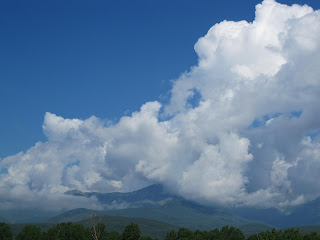Extremadura is an unspoilt part of the country made up of lush forests and majestic mountains, far removed from Spain’s crowded Costas both in terms of distance and character. It is one of Spain’s most sparsely populated regions, roughly the size of Belgium, and its distance from the coast has kept mass tourism at bay and relatively few tourists, either from Spain or elsewhere, venture to this western region of the Iberian Peninsula, sandwiched between the mountains of Portugal and the wide central plains of La Mancha.
We drove relentlessly west across vast agricultural plains peppered with towns and hamlets truly presenting us with glimpses of the real Spain, which is what we were keen to see. Beyond the fortified walls of the historic cities there are vast tracts of unspoiled countryside which attract flocks of rare birds from all over Europe and beyond. One of the most extraordinary sights in the whole of Spain is that of the region’s immense population of storks which build their huge nests on top of everything from palaces and telegraph poles to church spires and convent roofs.
The population of storks in Spain is rising, from six thousand seven hundred pairs thirty years ago to an estimated thirty-five thousand pairs today. In fact there are now so many White Storks in Spain that it is now second only to Poland who with fifty thousand birds has traditionally been the country with the most in Europe. This increase in numbers has been so dramatic that the conservation status has been changed from amber to green. Extremadura itself is believed to be home to more than eleven thousand storks along with many other rare and protected bird species which flourish in the nature reserves of the Province.
After a while we crossed the mighty Tagus and the road turned south with the Guadalupe Mountains to the east and the Monfrague National Park to the west. This it turns out is one of the most important raptor reserves in Europe and is the best place in Spain for a glimpse of Black Vultures and the rare Spanish Imperial Eagle. We kept a sharp eye out for a rare sighting but although we saw Buzzards, Hawks and Kites we didn’t see the rarer birds which sensibly keep well away from the road!
We drove through fields of grazing Black Iberian Pigs gorging themselves on acorns in preparation for being turned into the Spanish gastro specialty, Jamón ibérico. Iberian ham products are processed throughout Extremadura, making this region the country’s leading producer and in a sparsely populated region about a million hectares of open range are used by over one thousand-five hundred livestock breeders.
One of the fascinating things about the world’s great food is the way they are a product of geography and history combined into one mouthwatering gastronomic experience. The western provinces of Spain are a good example. About eight hundred years ago, it was decreed that every village would be responsible for maintaining a mixture of grass for grazing; cork trees for firewood; and holm oaks for shade, building materials and acorns. This woodland prairie, in effect a man-made ecosystem, once covered 90% of the region and while it is now much smaller, the dehesa, as it is called, still provides one of the world’s greatest hams: jamon iberico de bellota.
Bellota means ‘acorn’, and it so happens that the native black-hoofed pigs are remarkably fond of the vast piles of nuts that fall each autumn from the branches of the holm oaks. At this time of year, the cattle and sheep are shut away, and the pigs are turned loose to roam, snuffle and above all eat to their heart’s content. After two months of devouring up to ten kilograms of acorns a day, they roughly double their body weight. In winter the pigs are slaughtered and the legs cured with sea salt. Remarkably, though, the fattest animals are not yet even halfway through their journey from prarie to plate. The acorns on which they have been feeding are rich in oleic acid, the same fatty acid found in olives this means that their meat can cure for far longer than ordinary hams, from eighteen months to two years or even more.
Sold with its black hoof still attached, as an indication of its origins, it is kept on a special stand and carved into the thinnest of slices, to be served with a couple of eggs for breakfast, as evening tapas with a glass of salty fino sherry, or as a light lunch with crusty country bread and a little manchego cheese.
The ham of Extremadura is one of the best in the world and has won all the top awards. It is known as Pata Negra in Spain. Extremadura’s government had the “Dehesa de Extremadura” trademarked by the European Union in order to control the high quality standards and to prevent it from being counterfeited.
At Trujillo we left the Autovia de Extremadura and took the road to Cáceres across more open range with little sign of life until we reached the outskirts of the city, passed through the University quarter and then along an avenue with carefully manicured sycamore trees, all universally shaped, and then after driving into the old town and finding no vacant parking spaces we followed signs to an underground car park at the very edge of the old town.





No comments:
Post a Comment